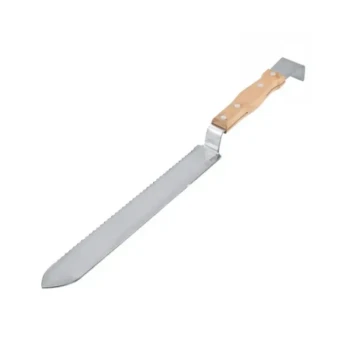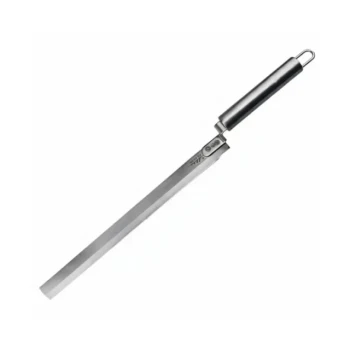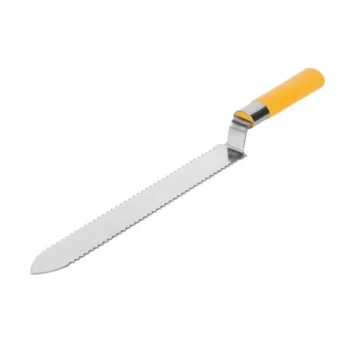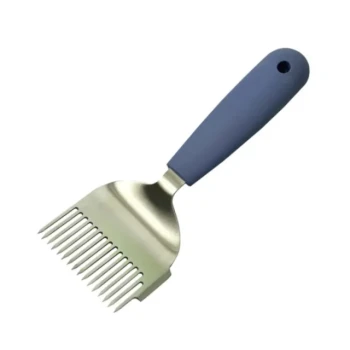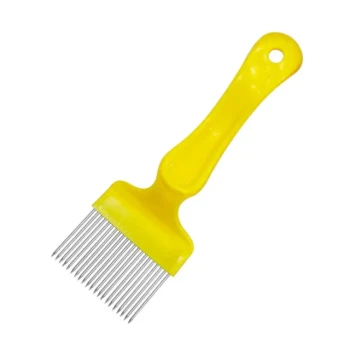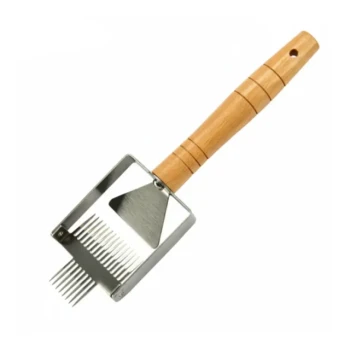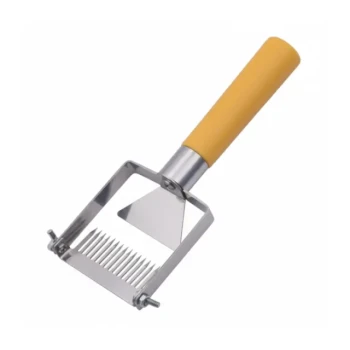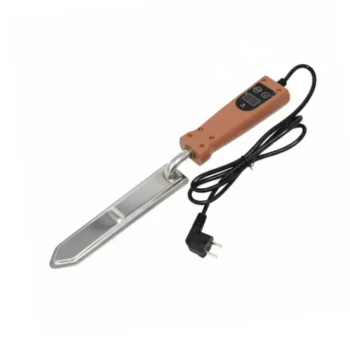In practice, a "cold knife" is rarely used cold. This simple, non-electric tool assists in uncapping by using its long, sharp blade to slice the wax cappings off a frame of honey. While its sharpness allows it to cut without heat, its performance is dramatically improved when heated in hot water, which allows the blade to melt through the wax for a much cleaner and easier cut.
The term "cold knife" is a misnomer that distinguishes it from an electrically heated knife. Its true value lies in its simplicity, offering precise control by using hot water for heat, making it a highly effective tool for hobbyist beekeepers.
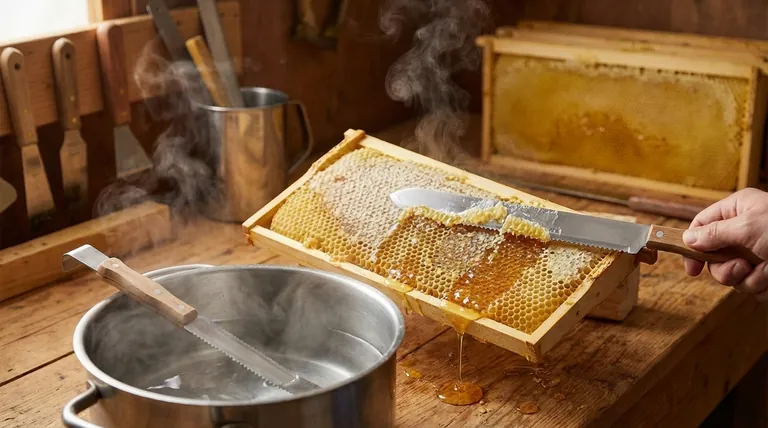
The Mechanics of an Uncapping Knife
To harvest honey, you must first remove the thin layer of beeswax, called cappings, that bees build to seal each cell. An uncapping knife is the primary tool for this task, designed to slice off this top layer in a single, clean sheet.
Why "Cold" Isn't Usually Cold
The name "cold knife" simply means the tool has no internal, electric heating element. It can, in theory, be used at room temperature, relying solely on its sharp edge to saw through the wax. However, this method requires more force and risks tearing the comb.
The universally recommended technique is to heat the blade in a pot of hot water. The heat transfers from the blade to the wax, melting it on contact and allowing the knife to glide through with minimal resistance.
The Two-Knife System
Because a non-electric knife cools down quickly, the most efficient workflow involves using two knives. One knife is kept heating in hot water while you work with the other.
When the working knife cools and begins to drag, you swap it for the hot one. This rotation ensures you always have a heated blade ready, minimizing downtime and creating a continuous, smooth uncapping process.
Key Design Features
Uncapping knives are not like kitchen knives. They typically feature a long, 10-inch blade that is wide enough to span the frame. This length, combined with a degree of flexibility, allows you to maintain even contact with the frame and slice off the cappings in one fluid motion.
Understanding the Trade-offs
A "cold" or non-electric knife is an excellent tool, but it's important to understand its limitations compared to other methods.
The Advantage: Simplicity and Cost
This tool is inexpensive, durable, and requires no electricity at the extraction site. It is easy to clean and maintain, offering excellent tactile feedback and control over the cutting depth. For beekeepers with only a few hives, it is the perfect balance of function and cost.
The Disadvantage: Speed and Efficiency
The primary drawback is speed. The constant need to swap and reheat knives slows down the overall process. For beekeepers with a large number of hives to harvest, the time spent managing water temperature and swapping tools can become a significant bottleneck.
The Role of a Capping Scratcher
No knife can perfectly uncap 100% of a frame. Honeycomb surfaces are often uneven, with low spots or recessed areas the knife blade will miss. A capping scratcher, a tool with sharp tines, is essential for puncturing the cappings in these hard-to-reach areas. It is a complementary tool, not a replacement for a knife.
Making the Right Choice for Your Goal
Selecting the right uncapping tool depends entirely on the scale of your beekeeping operation and your personal workflow preferences.
- If your primary focus is harvesting a few hives cost-effectively: A pair of non-electric "cold" knives used with hot water is the ideal, time-tested solution.
- If your primary focus is processing many frames quickly: An electrically heated knife provides constant heat, eliminating the need to swap tools and dramatically increasing your efficiency.
- If your primary focus is a perfect harvest: You will need both a knife (either electric or non-electric) for the main surfaces and a capping scratcher for the inevitable uneven spots.
Ultimately, understanding how your tools work empowers you to choose the method that best fits the size of your harvest and your desired efficiency.
Summary Table:
| Feature | Details |
|---|---|
| Primary Use | Slicing wax cappings off honey frames |
| Recommended Method | Heated in hot water for a cleaner cut |
| Ideal For | Hobbyist beekeepers with a few hives |
| Key Advantage | Simple, cost-effective, and offers precise control |
| Common Practice | Using a two-knife system for continuous workflow |
Ready to perfect your honey harvest? HONESTBEE supplies durable, precision uncapping knives and essential beekeeping equipment to commercial apiaries and distributors. Our wholesale-focused operations ensure you get the reliable tools you need for an efficient uncapping process. Contact us today to discuss your supply needs and elevate your beekeeping operation!
Visual Guide

Related Products
- Professional Z-Shaped Multi-Function Uncapping Knife for Beekeeping
- Professional All-Stainless Steel Uncapping Knife for Beekeeping
- Honeycomb Uncapping Knife for Apiculture
- Professional Serrated Double-Sided Uncapping Knife for Beekeeping
- Professional Multi-Function Uncapping Fork with Ergonomic Rubber Grip
People Also Ask
- What is the benefit of the serrated edge on an uncapping knife? Unlock Faster, Cleaner Honey Extraction
- How to clean an uncapping knife? Master the Hot-Knife Method for Easy Maintenance
- What types of uncapping tools are recommended for beekeepers? Optimize Your Honey Harvest with the Right Tools
- What are the essential tools for uncapping honey frames? Choose the Right Tool for Your Apiary
- What temperature should a honey knife be? The Key to Clean, Fast Uncapping
